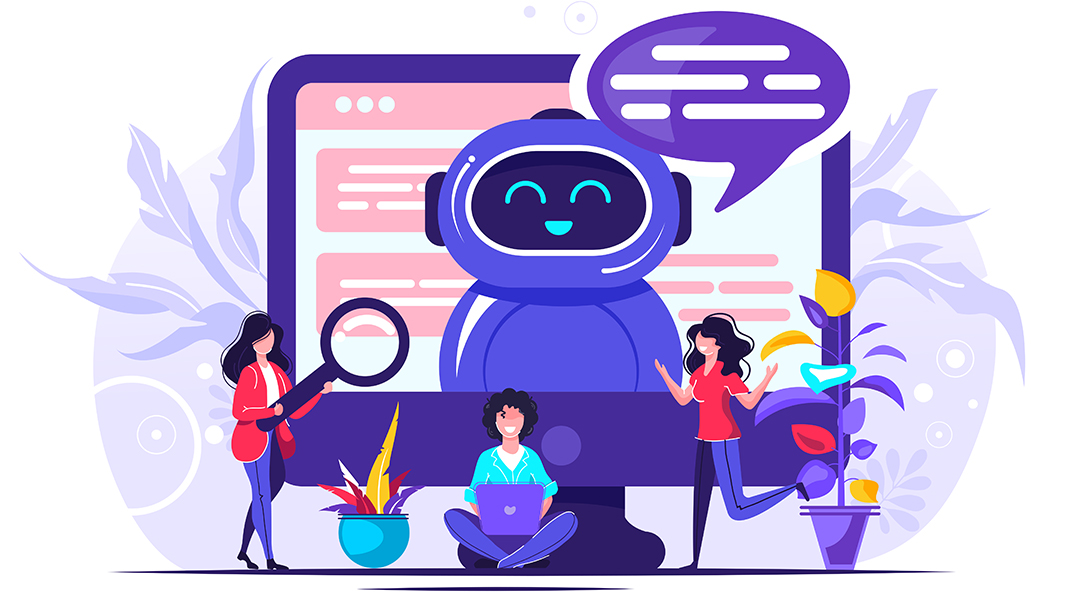
In the Digital Age consumers expect to have their questions and concerns answered quickly and in a personalized manner. The rise of new, instant communications channels — social media, chat platforms, and instant messaging — has changed how people interact with and expect their favorite brands to serve them.
For example:
- 89% of customers expect a response to their email within a day
- Consumers will wait an average of 11 minutes on the phone before hanging up
- Consumers expect chat or other non-phone communications to start within 45 seconds
In response, many enterprises attempt to deliver on these expectations by investing heavily in human customer service teams. But adding representatives to field live calls and respond to emails is neither scalable nor sustainable. And it’s not actually what consumers want. Studies suggest that as much as 40% of consumers don’t care whether a digital representative like a chatbot or real human helps them, just that their questions are addressed and answered quickly.
As a result, enterprises across industries and sectors are recognizing the value and benefit of chatbots to more efficiently and cost-effectively engage with global customer audiences. Here are three common use cases for chatbots that can help improve customer satisfaction and reduce the cost of customer service.
1. Finding information
Customer support and sales teams are increasingly inundated with a large volume of inquiries. Anything from simple requests about office hours and pricing to more complex ones about installation or troubleshooting may reach a customer support team at any time. More than one-third of customers expect there to be no wait at all to reach customer service representatives, but it’s challenging for human representatives to answer questions quickly and accurately at such a large scale.
Chatbots are ideal for handling these information requests and for giving customers a self-service option to get answers immediately. AI-powered chatbots leverage your existing knowledge base and natural language processing (NLP) capabilities to match customer questions with the information in your database or website. Many intelligent chatbots can even leverage data from customer interactions from across multiple channels to improve the responses they give as time goes on.
More importantly, chatbots help to free up human resources for other high-value tasks like customer outreach, sales follow up, or market research.
2. Automated transaction
Sometimes customers need more than just an answer to a question. Sometimes they need help with routine (but important) actions like resetting a password, verifying their identity, or completing a transaction that shouldn’t require human interaction.
Transactional chatbots are designed to handle these low-complexity transactions on behalf of human staff with relatively little coding or development. Bots can unburden over-tasked support teams of repetitive low-impact tasks from any connected device at any time. Chatbot’s self-service features and robust transactional capabilities can greatly improve the customer experience with minimal additional investment.
3. Seamless service with warm handoffs
In most cases, chatbots were never intended as a complete replacement for humans. Instead, they’re designed to support and work with a knowledgeable team of human agents. Usually that means deploying a chatbot to popular customer engagement points like a website, shopping cart, or text line where they can triage customer inquiries and resolve any low-level questions or requests.
For more complex scenarios — deep-dive troubleshooting, specific questions about an account, or multi-product sales opportunities — that bots are ill-equipped to handle, they can be “trained” to hand that information off to an available human agent who’s more qualified and better prepared to resolve the customer’s issue.
Support teams can design decision trees and routing processes for chatbots so that the customer is seamlessly transferred to the right person at the right time. And when the human agent interacts with the customer, all the information that the chatbot collected is readily available for use, helping to increase one-call resolution rates while reducing hold times, repeat calls, and unnecessary escalations that can increase revenue by as much as 8%.
Just The Beginning
For businesses eager to strike a balance between improving their customers’ experiences and cost management, chatbots are an ideal business solution. Automating front-end communications and enabling warm handoffs for complex requests can help companies reduce customer support costs by up to 30% while dramatically enhancing their customers’ satisfaction.
SnapEngage chatbots and live human chat solutions help enterprises in every industry, in any location find the perfect balance between automated and human interactions to meet consumer expectations. The platform’s flexible and configurable workflows help customer support teams quickly and appropriately respond to general queries, while intelligently routing more complex issues to the most experienced and well-trained team members.
Schedule a demo to learn more about how SnapEnagage’s fully integrated communications platform can empower your sales and customer success teams deliver a superior customer experience that drives revenue, retention, and goodwill.

